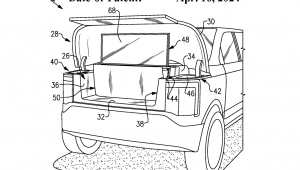Change the Channels

"One size fits all" surround is dying. It's time for us all to consider a whole new dimension. First, a parallel to impart from the annals of tech history. In the earliest days of photography, the emulsions and lenses were extremely "slow." Even in bright sunlight, a plate might require hours of exposure time. As technology improved, exposure times decreased to a minute or so. That was fast enough for portraits, but just barely. To make sure subjects didn't move, it was standard practice to put the person's head in a clamp. Mathew Brady's best Civil War photographs were of battlefield corpses, which helpfully tended to be stationary. Which brings us to traditional surround sound.
Anyone who's had the pleasure of setting up a surround sound system knows all about speaker placement. Although different 5.1 and 7.1 configurations are espoused, it's terribly important to follow a prescribed layout. For example, the front speakers should be placed at ±30°, and the surrounds at ±120° (luckily there's an app that can help you calculate those angles). If your speakers are in those exact places, and you sit precisely in the sweet spot and remain there for the duration, you'll get spatially balanced playback. Oh, and one more thing: It helps immensely if you pretend that your head is clamped.
This kind of absolutism isn't new. Surround sound speaker-placement schemes are direct descendents of stereo speaker-placement schemes. In both cases, any hope for high fidelity rests on your tape measure and protractor. If you want good playback, the speakers must be in certain locations, and your head must be exactly in the middle. It's a totalitarian prescription. But it makes sense. It's scientific. We all do it.
It's also a royal pain. If your comfy chair isn't exactly in the middle of the speaker layout, you are SOL. If you move away from the comfy chair, you are SOL. If there is a doorway where a speaker is supposed to go, you are SOL. If some of your measurements and angles are off, you are SOL. Forcing a room in your home, and your lifestyle in that room, to fit an arbitrary standard just isn't cool.
For that reason, among others, that kind of multichannel playback is losing favor. Fewer and fewer people are willing, or able, to devote a room or their attention span to old-style playback. Instead of conforming to a loudspeaker configuration, people are breaking away from it. For example, they've discovered how liberating headphones can be. For all their limitations, headphones offer freedom; anywhere you go, headphones keep you centered within the music. To those of you who log lots and lots of hours in your comfy chair, congratulations! But that kind of arbitrary playback is just not the future.
So, aside from headphones, what's the future of playback? The future lies in the next generation of surround sound playback. Among their many benefits, future technologies (such as those described in Geoffrey Morrison "The Future of Surround Sound" feature, which you can read here) will carry us beyond the old rigid playback formulas. They will allow atypical loudspeaker configurations and scalability across many configurations and playback devices.
Within limits, future systems will allow flexibility in where speakers are placed and where you listen. The system will determine how your playback geometry has been implemented and adjust accordingly. Furthermore, when I pick up my iPad/remote and move through the room, future systems could follow me and readjust. Some prototype systems even use head tracking to shift the soundfield when you turn your head.
Of course, no technology can repeal the laws of physics; if your speakers are wildly asymmetrical or if you sit right next to a speaker, the soundfield will be badly unbalanced. But new playback technologies will help liberate us from the confines of arbitrary playback configurations. Instead of multichannel sound with perhaps 6 or even 12 channels, imagine a new paradigm of multidimensional sound with hundreds of sound objects.
One final comment: These future technologies are more than cool. They are essential. People will not turn back the clock on their listening lifestyles to fit old technology. Instead, the playback technology must adapt to them; that's the only way that high-quality surround playback will survive. But if you insist, I can give you a pretty good deal on a head clamp.





























































